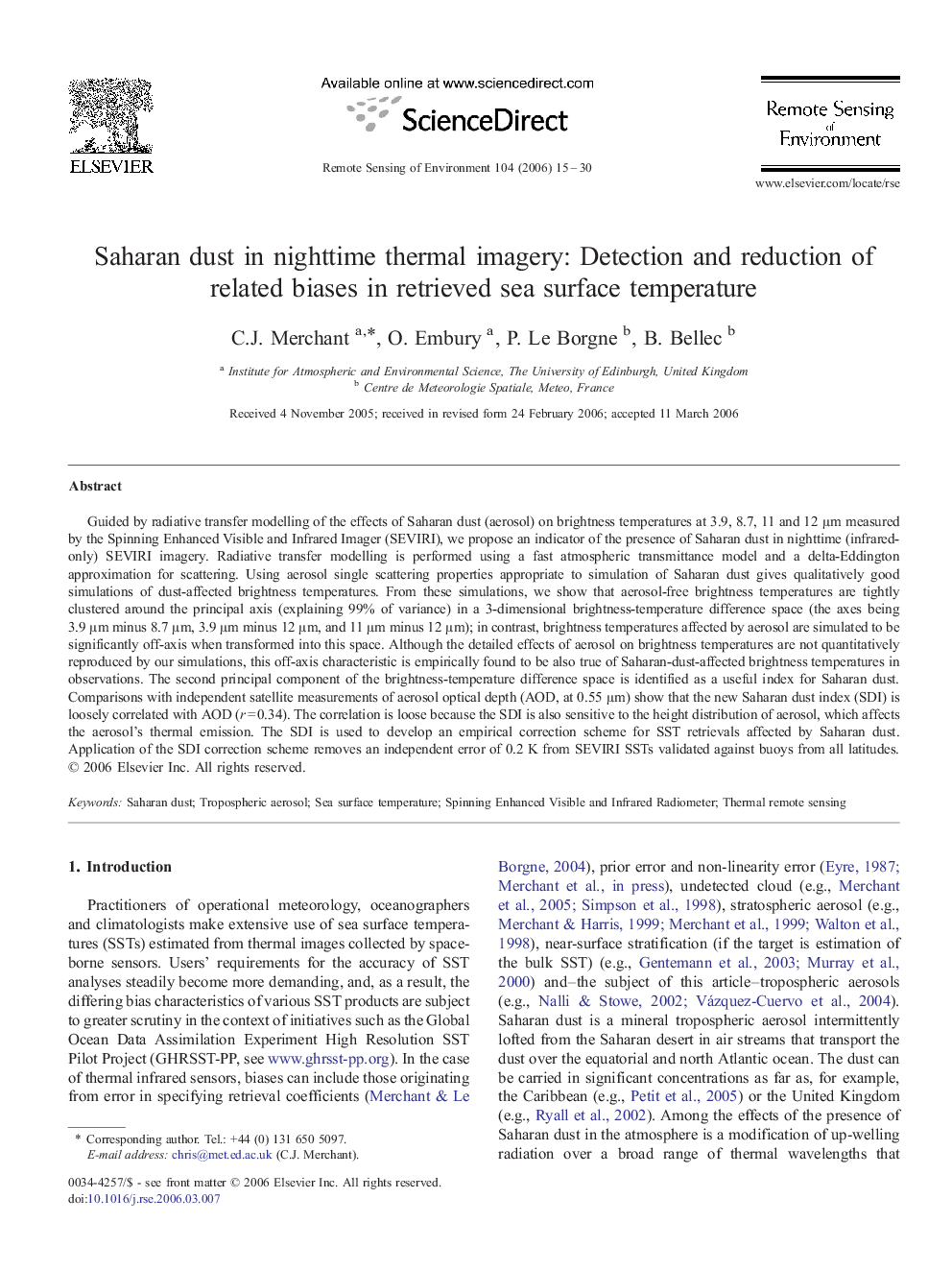| Article ID | Journal | Published Year | Pages | File Type |
|---|---|---|---|---|
| 4460959 | Remote Sensing of Environment | 2006 | 16 Pages |
Guided by radiative transfer modelling of the effects of Saharan dust (aerosol) on brightness temperatures at 3.9, 8.7, 11 and 12 μm measured by the Spinning Enhanced Visible and Infrared Imager (SEVIRI), we propose an indicator of the presence of Saharan dust in nighttime (infrared-only) SEVIRI imagery. Radiative transfer modelling is performed using a fast atmospheric transmittance model and a delta-Eddington approximation for scattering. Using aerosol single scattering properties appropriate to simulation of Saharan dust gives qualitatively good simulations of dust-affected brightness temperatures. From these simulations, we show that aerosol-free brightness temperatures are tightly clustered around the principal axis (explaining 99% of variance) in a 3-dimensional brightness-temperature difference space (the axes being 3.9 μm minus 8.7 μm, 3.9 μm minus 12 μm, and 11 μm minus 12 μm); in contrast, brightness temperatures affected by aerosol are simulated to be significantly off-axis when transformed into this space. Although the detailed effects of aerosol on brightness temperatures are not quantitatively reproduced by our simulations, this off-axis characteristic is empirically found to be also true of Saharan-dust-affected brightness temperatures in observations. The second principal component of the brightness-temperature difference space is identified as a useful index for Saharan dust. Comparisons with independent satellite measurements of aerosol optical depth (AOD, at 0.55 μm) show that the new Saharan dust index (SDI) is loosely correlated with AOD (r = 0.34). The correlation is loose because the SDI is also sensitive to the height distribution of aerosol, which affects the aerosol's thermal emission. The SDI is used to develop an empirical correction scheme for SST retrievals affected by Saharan dust. Application of the SDI correction scheme removes an independent error of 0.2 K from SEVIRI SSTs validated against buoys from all latitudes.
